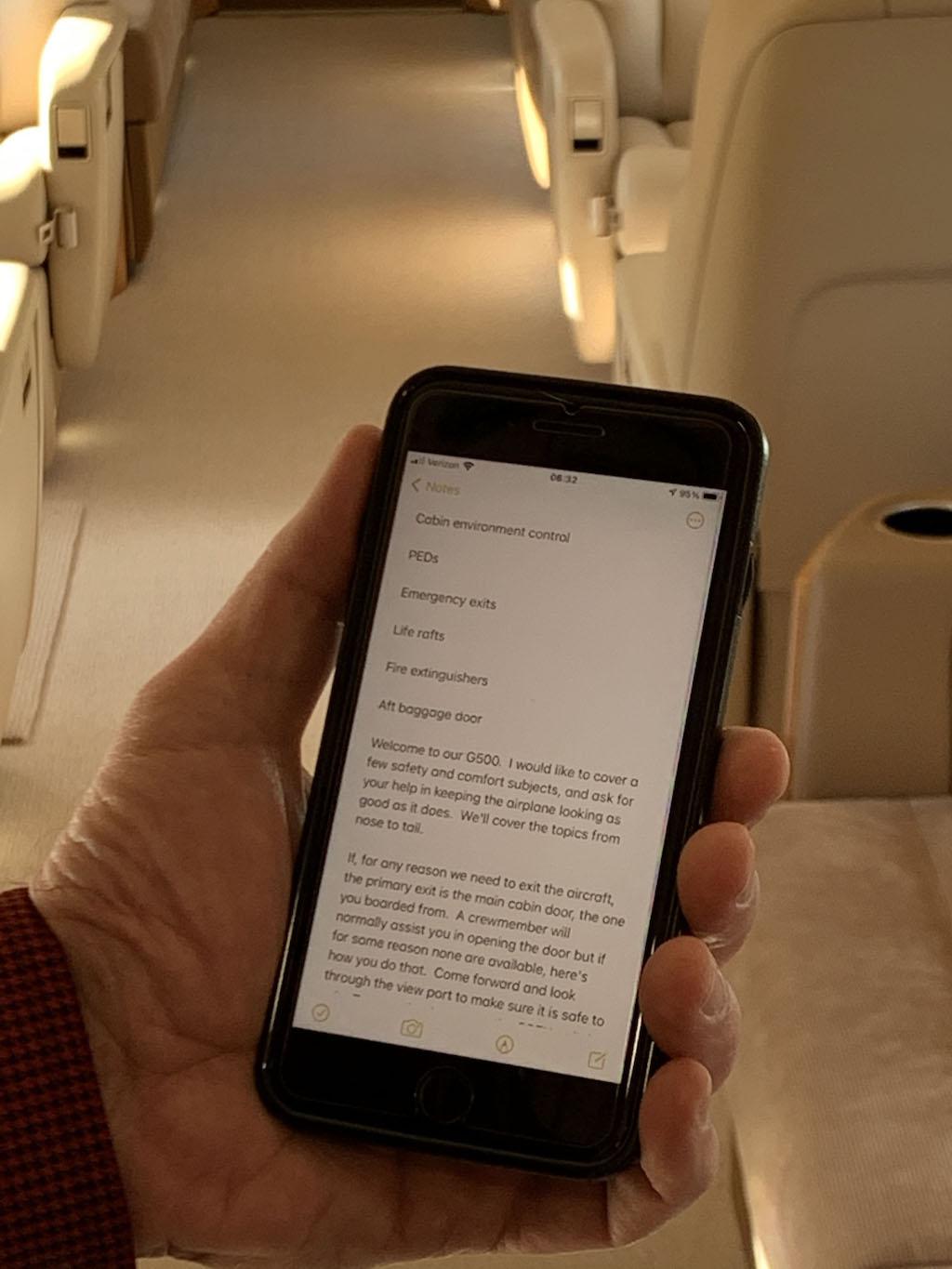
Editor's note: The first part of this article series discussed the regulations and risks of passenger briefings.
Airline passengers can be so skilled at listening to a flight attendant’s “canned” briefing that they have it memorized. Pity the poor flight attendant who has to give it several times a day! In the business aviation world, we might give the briefing so infrequently that we are unable to recite it without a cue card. (I have mine on my phone.)
You should design the briefing so that it holds your passengers’ attention, keeps them interested in the important content, and keys you to cover the required points. My technique is to start at the front (main entrance door operation), go to the first seat (seat belts and life vests), point to the no smoking sign (no smoking and then to the emergency lighting), point to the location of the oxygen masks, point to the cabin control iPods (also talk about portable electronic devices), point to the emergency exits and the life rafts below the divans, point to the aft galley (and the position of the nearest fire extinguishers) and point to the aft baggage door (to remind them of the altitude limit for access above 45,000 ft.).
Practice
Having grown up flying with flight attendants, my first opportunity to give a passenger briefing was as a “seasoned” pilot with 20 years of flying under my belt. Afterward, one of my passengers said, “I hope you know the cockpit better than the cabin.” Ouch! Now, 20 years later, I volunteer for the duty just to keep it fresh in my mind. When we traded one aircraft for another, I insisted that each pilot practice on the rest of the flight department first. You know, and I know, that your ability to give a passenger briefing has very little to do with your skills as a pilot. But your passengers might not know that; so, you better practice.
Keep Records
If you elect to give your passenger briefings less than once every takeoff or once every trip, I recommend you document who has been briefed. That will avoid the embarrassing moment of having to ask someone if they’ve been briefed only to hear them say, “Yeah, you gave me that briefing last week!” Or even worse, having them say yes only to avoid it altogether. It can also serve to reassure you that people putting their lives in your hands every flight will have every advantage that comes from a recent and thorough passenger briefing.





